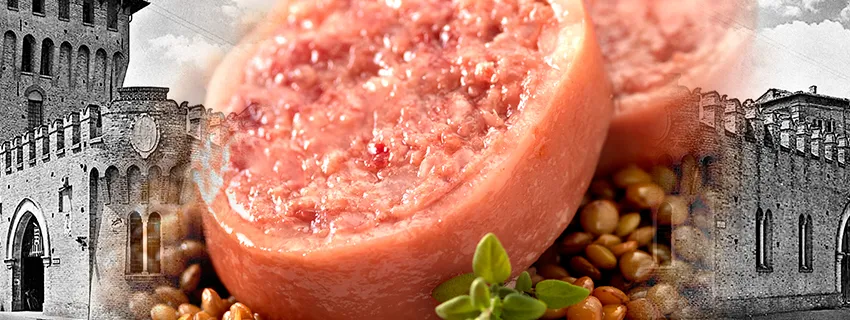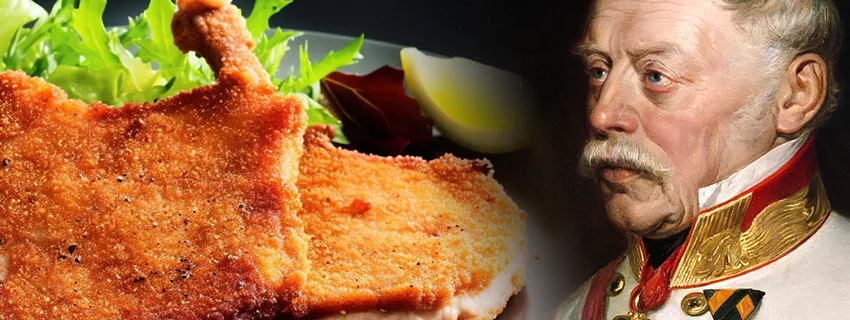Published:
Author: Antonio Maria Guerra
Italian Main Courses
The Most Typical Specialties

Welcome! This section of WebFoodCulture is dedicated to the most typical main courses of the Italian gastronomy. We will explain what makes them so special and inimitable, starting with their history and places of origin, all seasoned with a large number of curiosities. Finally, we will discover the most traditional restaurants and producers, thanks to which it will be possible to savor the most authentic taste of these delicacies. Enjoy the reading!
‘Cotechino’ is a particular type of cured meat, preprared with a mixture of pork (fat and rind included), salt and various seasonings, all enclosed in a natural casing consisting of pork innards. Cylindrical in shape, it looks like a large sausage. This specialty is part of the gastronomic tradition of many Italian places: in each of them it has peculiar characteristics. The most famous is undoubtedly the Cotechino from Modena (read more)
Origin: Modena (Emilia-Romagna) Typology: Main Courses
Last update
Zampone is a typical sausage from the province of Modena, a town with ancient origins located in the Italian region of Emilia-Romagna. The specialty, made from pork, is the heir to a very old peasant tradition: a characteristic that contributes to increase its appeal. (read more)
Origin: Modena (Emilia-Romagna)
Typology: Main Courses
There is no doubt that Veal Milanese, together with the famous Risotto and Panettone, is a standard-bearer of the Milanese gastronomic tradition. Let’s discover the origins of this specialty, trying to understand what really distinguishes it from a similar one: the Austrian ‘Wiener Schnitzel’. (read more)
Origin: Milan (Lombardy)
Typology: Main Courses
Cured meat (in Italian ‘insaccato’), is a kind of food prepared by stuffing a mixture of minced meat, fat, herbs and spices in the intestinal (or synthetic) skin of an animal. It can be raw (such as salami and Cotechino) or cooked (such as wurstel and Mortadella). (read more)

For more than 30 years a very interesting event has been organized in the small Italian town of Castelnuovo Rangone
Read more
(in the province of Modena), an event during which Zampone is celebrated. It’s not surprising, considering that pigs has always been at the very center of the economic life of this area.
On this occasion a huge ‘SuperZampone’ is made by the local Master Salumieri: suffice it to say that the one prepared in 2014 was so big (1038 kg) that rightfully entered the Guinness Book of World Records. The event, in addition to a large number of people, has always attracted many celebrities, including the tenor Luciano Pavarotti and the conductor Claudio Abbado.
The Association that has linked itself to the specialty has an official website (LINK).
(read more)

The meaning of the word ‘asado’ is, literally, ‘roasted’. It was the Spanish colonizers who, centuries ago, passed on to the peoples of South America the passion for this way of cooking meat. A passion that took root right away, also thanks to the excellent quality of the cattle that, still today, graze the vast plains of the Pampas. (read more)
Origin: Argentina Typology: Main Courses
Specialties from the world
Very ancient is the habit of the wealthiest people to garnish their food with thin gold leaves,
Read more
not only as a display of opulence but also in the belief that ingesting the precious metal can be particularly healthy.
This practice was (and still is) forbidden to the poor classes, who immediately found an alternative: eating specialties that had, at least, the color of the precious metal. Among these, the fried ones, since they could boast golden reflections. Veal Milanese was, and still is, one of them. (read more)
Copyright information.
To get copyright information about the images on this page, please refer to the copyright section of each article.







